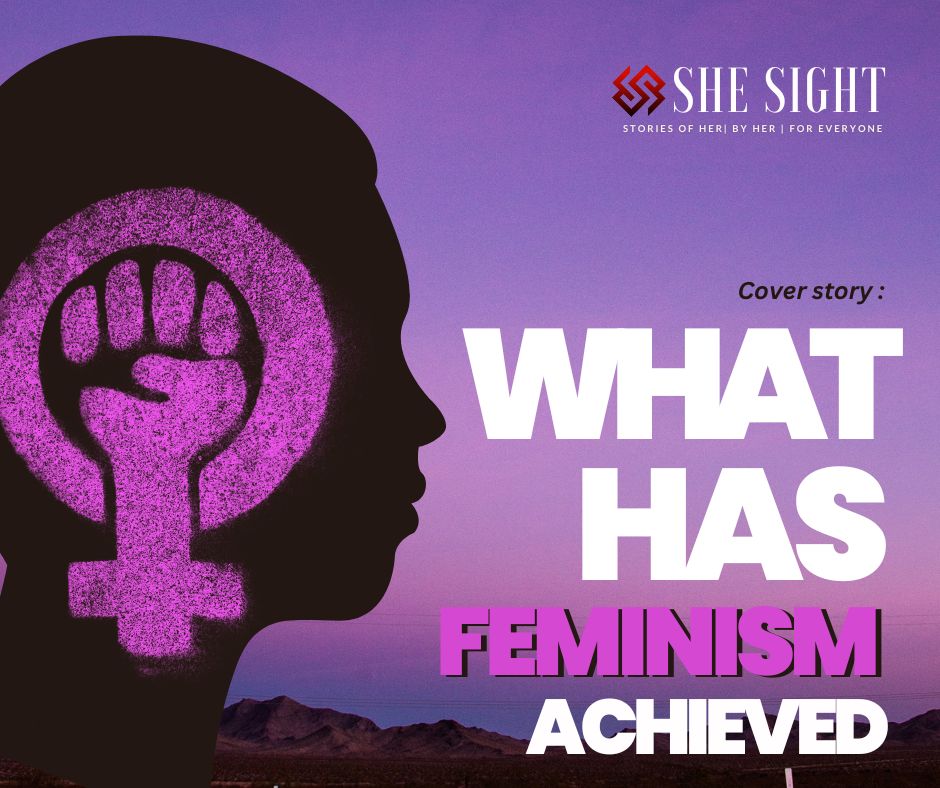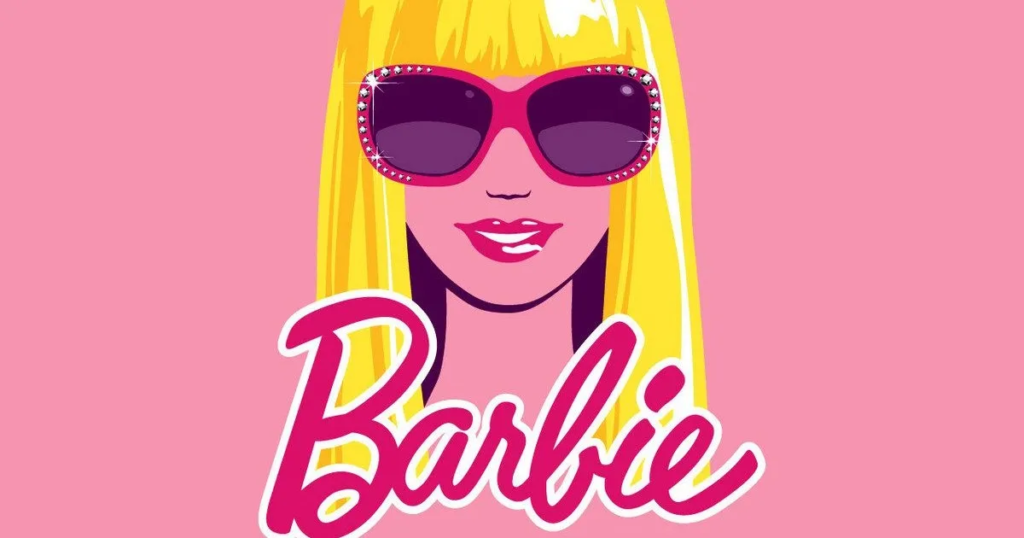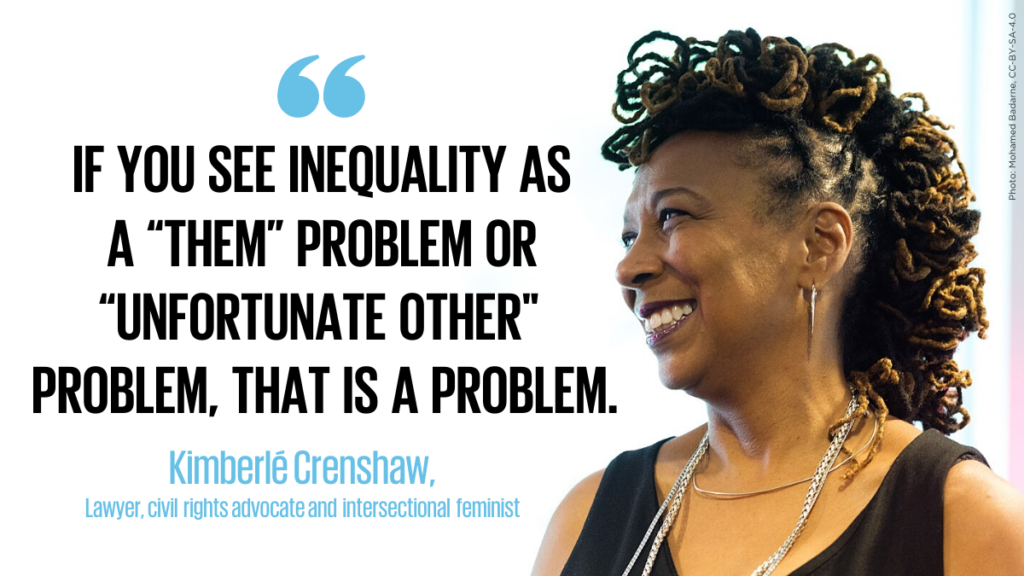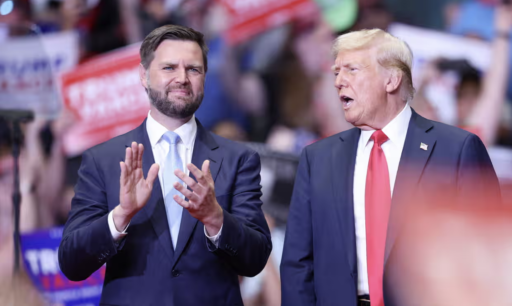What has Feminism Achieved


Picture a young girl in Pakistan by the name of Malala Yousafzai. Her desire was simple yet profound: Education. Her struggle for girls’ education transformed into a worldwide emblem of determination. But Malala’s story isn’t just about her individual journey.
Here’s the remarkable story of this young girl from Pakistan whose journey became a beacon of hope and inspiration, showcasing the incredible impact of feminism.
Malala Yousafzai was born in Mingora, a picturesque town in Pakistan’s Swat Valley, in 1997. Her story began like that of many other girls in her community, where access to education was a luxury often denied to girls. From a very young age, Malala developed a deep thirst for knowledge, nurtured by her father, Ziauddin, a passionate advocate for education himself.
Despite the societal norms that discouraged girls from attending school, Malala’s family supported her educational aspirations. She attended a school that her father had founded, where she thrived as a diligent and eager student. Malala’s passion for learning was matched only by her unwavering determination to challenge the status quo.
As the Taliban insurgency spread through the Swat Valley, they imposed a strict interpretation of Islamic law, which included banning girls from attending school. Malala, even at her young age, decided to take a stand, becoming an anonymous blogger for the BBC Urdu under the pseudonym Gul Makai. In her blog, she eloquently narrated her experiences, sharing the struggles and fears of girls in the region who were denied an education.
Malala’s courageous writings caught the world’s attention. In 2012, as she rode the school bus home, a masked gunman boarded and shot her in the head to silence her. Her survival and recovery from this heinous attack only strengthened her resolve.
Her story garnered international support and condemnation of the Taliban’s actions. The worldwide response in support of her and her cause demonstrated the strength of unity in the presence of oppression. Malala’s activism transcended borders, uniting people worldwide in the belief that every girl deserves access to education.
Her advocacy led to the Malala Fund, an organization dedicated to ensuring 12 years of free, quality education for girls globally. Malala, the girl who simply yearned for an education, had become a champion for the millions of girls still denied that basic right.

So, when we talk about Malala’s story, it’s not just about one extraordinary girl; it’s about the transformative power of feminism. It’s about how one girl’s courage and determination ignited a global movement that continues to break down barriers, challenge norms, and uplift countless other girls who aspire to follow in her footsteps. Malala’s journey stands witness to what feminism can achieve when individuals refuse to accept inequality and injustice, no matter their age or circumstances.
SheSight delves into the multifaceted achievements of feminism while exploring the challenges it faces and drawing insights from real-world examples.
Feminism’s Remarkable Impact: Progress and Triumphs
1. Political Power: Women at the Helm
Let’s see how feminism has played a pivotal role in granting women political power, drawing on historical and contemporary examples.
In the late 1800s and early 1900s, the landscape of women’s rights was vastly different from what we know today. Women in the United Kingdom and the United States were not just knocking on the doors of political power; they were demanding they be flung wide open. Their struggle for the right to vote, known as the suffragette movement, was a defining moment in the history of feminism.
Imagine this: Women, who for centuries had been relegated to the domestic sphere, who had been told their voices didn’t matter in matters of governance, stood up in unison to challenge this deeply ingrained inequality. They marched, they rallied, and they faced arrests and social ostracization. Yet, their resolve remained unshaken.
Their tireless efforts bore fruit. In 1893, New Zealand took the historic step of becoming the first self-governing country to grant women the right to vote. This landmark decision sent ripples across the globe, signaling that change was possible. But this was just the beginning.
In 1920, the United States followed suit with the ratification of the Nineteenth Amendment to the Constitution, which extended voting rights to American women. This was a monumental victory for suffragettes who had dedicated their lives to this cause. It marked a turning point in history, proving that collective action and unwavering determination could bring about transformative change.

Fast forward to the present day, and we witness the tangible results of these historical struggles. We see women like Angela Merkel, who served as Germany’s Chancellor for 16 years, leading their nations with a blend of strength, intellect, and grace. Angela Merkel’s leadership not only shattered the glass ceiling but also exemplified how women can navigate the complex world of politics with resilience and poise.
Jacinda Ardern, the former Prime Minister of New Zealand, is another shining example. Her empathetic and inclusive approach to leadership during crises, such as the Christchurch Mosque shootings and the COVID-19 pandemic, has garnered global admiration. She has shown that women leaders are not just capable but can excel in times of immense challenge.
Be it Margaret Thatcher from the UK, Indira Gandhi from India, Dilma Rousseff from Brazil, or Golda Meir of Israel, these women leaders have left an indelible mark on the world of politics, embodying the enduring spirit of feminism and challenging gender stereotypes along the way.
So, when we look at the journey of feminism and its impact on political power, we see that it’s not just about the right to vote; it’s about women stepping into roles of authority, decision-making, and governance. It’s about the recognition that women’s perspectives and leadership are indispensable in shaping the future of nations. The suffragettes’ struggle was the first step on this remarkable journey, and the women leaders of today are living proof that their legacy endures.
2. Legal Justice: Closing the Pay Gap
In the realm of legal equality, feminism has acted as a catalyst for substantial change. The U.S. Equal Pay Act of 1963 stands as a pivotal moment in this ongoing struggle. This act boldly declared that the era of gender-based wage discrimination was over. It mandated that women should receive equal pay for equal work. This was a monumental step towards addressing the deeply rooted inequalities that women had faced in the workplace for centuries.
However, despite this significant legal advancement, the gender wage gap persists globally. It’s a stark reminder that achieving legal equality is just the first step in a long journey towards gender parity in the workforce. Women, on average, continue to earn less than their male counterparts for performing the same job. This persistent wage gap not only reflects deeply ingrained biases but also highlights the need for more rigorous measures to ensure pay equity.
Enter Iceland, a shining example of progress in this regard. In 2018, this Nordic nation implemented groundbreaking legislation aimed at closing the gender wage gap. What makes Iceland’s approach noteworthy is that it places the onus on companies to prove they are offering equal pay for equal work.
Under this law, companies with 25 or more employees are required to undergo a meticulous certification process. They must analyze their pay structures to ensure that there are no disparities based on gender. If discrepancies are found, the companies are mandated to rectify them immediately. Failure to do so can result in significant fines.
Iceland’s approach not only holds organizations accountable for wage disparities but also fosters transparency. It sends a powerful message that gender-based wage discrimination will not be tolerated. This legislation isn’t just about rhetoric; it’s about real, measurable change.
The impact of Iceland’s policy is already evident. In the first year of implementation, around 1,500 companies in Iceland underwent the certification process, representing a significant portion of the country’s workforce. This proactive approach, combined with a culture that values gender equality, has made Iceland a leader in the global fight for pay equity.
So, when we talk about feminism’s influence on the legal front, we recognize that it’s not just about passing laws; it’s about holding institutions accountable and implementing measures that create tangible change. Iceland’s approach serves as a glimmer of hope, showing that with the right policies and commitment, the gender wage gap can be substantially reduced, if not eradicated. This demonstrates what can happen when feminism and legal action join forces to tackle long-standing inequalities head-on.
3. Education and Careers: Transforming Paths
We can explore Dr. Mae Jemison, the first African-American woman in space, and how her journey exemplifies the influence of feminism on education and careers.
Born on October 17, 1956, in Decatur, Alabama, she grew up in a time when gender and racial disparities were deeply ingrained in American society. But young Mae was not one to be constrained by these limitations. From an early age, she exhibited a keen interest in science and a profound curiosity about the universe.
Education became her gateway to pursuing her dreams. Mae’s parents, recognizing her potential, provided unwavering support for her academic pursuits. She excelled in school, displaying a particular aptitude for the sciences. Her journey took her to Stanford University, where she studied chemical engineering. Even at this early stage, she was breaking gender and racial stereotypes in a field predominantly dominated by men.
After completing her studies at Stanford, Mae continued to follow her passion for science and enrolled in medical school at Cornell University. She earned her Doctor of Medicine (M.D.) degree in 1981.
But Mae’s story doesn’t end there. She was not content with merely pursuing a medical career. Inspired by the space program, she aspired to reach the stars. In 1987, she took a giant leap toward this dream when she was selected by NASA to become an astronaut candidate.
Becoming an astronaut wasn’t easy, and the selection process was fiercely competitive. Mae’s background in medicine made her a unique candidate. In 1992, Mae Jemison made history when she boarded the Space Shuttle Endeavour on mission STS-47. She became the first African-American woman to travel to space.
Mae’s journey to space was a triumph not only for her personally but also for women and people of color across the world. Her achievement opened new possibilities for all those who aspired to careers in fields traditionally dominated by white men.
Her legacy continues to inspire generations of young women and people of color to pursue their dreams, no matter how unconventional they may seem.
Dr. Mae Jemison’s story is a living example of how feminism, alongside education, can pave the way to make a profound impact on traditionally male-dominated fields like space exploration. It’s a story that reminds us that the sky is not the limit; it’s just the beginning.
4. Reproductive Rights: A Fundamental Aspect of Feminism
Reproductive rights have long been at the forefront of feminist advocacy. This crucial aspect of feminism centers on the belief that women have the right to make decisions about their bodies, including choices related to pregnancy and childbirth. This fight for autonomy over reproductive health has had significant legal and societal implications.
Roe v. Wade: A Watershed Moment
One of the most pivotal moments in the history of reproductive rights was the US Supreme Court’s decision in the case of Roe v. Wade in 1973. This landmark ruling legalized abortion in the United States, marking a historic victory for women’s control over their bodies. The decision was based on the recognition of a woman’s constitutional right to privacy, which included the right to choose to terminate a pregnancy.
The Roe v. Wade decision was not just about legalizing abortion; it was a profound acknowledgment of a woman’s agency and the right to make deeply personal decisions without government interference. This ruling fundamentally changed the landscape of reproductive rights in the United States and served as a beacon of hope for advocates of women’s autonomy worldwide.
The Ongoing Battle for Reproductive Justice
While the Roe v. Wade decision was a significant leap forward, the battle for reproductive justice is far from over.
U.S. Supreme Court Reverses Constitutional Right to Abortion
In June 2022, in a far-reaching verdict, the U.S. Supreme Court relinquished its responsibility to uphold fundamental rights and overturned the precedent set by Roe v. Wade, asserting that there is no constitutional right to abortion. The ruling in the case of Dobbs v. Jackson Women’s Health Organization marks the abandonment of nearly five decades of legal precedent and represents the first instance in history where the Supreme Court has revoked a fundamental right.
This action would compel individuals to undertake extensive journeys of hundreds or even thousands of miles to access abortion services or to carry pregnancies against their will, a serious violation of their human rights.
The term “reproductive justice” encompasses not just the right to choose but also the broader issues of access to quality healthcare, comprehensive sex education, and the elimination of systemic barriers that disproportionately affect marginalized communities.
Savita Halappanavar’s tragic death in 2012 in Ireland tragically underscored the continued struggles in the fight for reproductive justice. Savita, a 31-year-old dentist, died from complications arising from a denied abortion. Her case became a symbol of the devastating consequences of restrictive abortion laws.
Savita’s story touched hearts worldwide and reignited the conversation about the importance of safe and legal access to abortion services. Her death became a rallying cry for reproductive rights advocates who demanded that no woman should suffer due to outdated and restrictive laws.
The Way Forward
The fight for reproductive rights and justice is ongoing and complex. Feminism continues to play a pivotal role in advocating for reproductive rights and justice. It underscores the importance of ensuring that individuals have the information, resources, and support necessary to make informed decisions about their reproductive health.
5. Media Representation: From Stereotypes to Empowerment
One of feminism’s significant contributions to society has been its impact on how women are depicted in media. Historically, women in media often fell victim to harmful stereotypes, portraying them as one-dimensional characters or reinforcing traditional gender roles. Feminism has been instrumental in challenging and changing these narratives.
The Bechdel Test: A Litmus Test for Fair Representation
The Bechdel Test, coined by cartoonist Alison Bechdel, is a simple yet powerful tool for assessing gender representation in fiction. The test asks three basic questions about a work of fiction:
- Does it have at least two named female characters?
- Do these characters have a conversation with each other?
- Is the conversation about something other than a man?
The Bechdel Test doesn’t set an impossibly high bar; it merely seeks to highlight whether women in a story have their own agency, lives, and concerns that extend beyond their interactions with male characters. While passing the Bechdel Test doesn’t guarantee a work’s feminist credentials, it does serve as a starting point for evaluating gender representation.
Empowering Female Characters: “Wonder Woman”, “Barbie”, and “Black Panther”
In recent years, we’ve seen a significant shift in the portrayal of women in media, particularly in blockbuster films.

“Wonder Woman,” shattered the glass ceiling for female superheroes on the big screen. Gal Gadot’s portrayal of Diana Prince not only showcased her physical prowess but also her intelligence, compassion, and determination. The film’s success underscored the demand for complex, empowered female characters at the forefront of cinematic narratives.
In many movies, women are often introduced through the lens of the male gaze. However, the Wakandan warriors offer a refreshing departure from these stereotypes. “Black Panther 2,” made waves in terms of representation. It features a remarkable ensemble of strong and multi-dimensional female characters. Characters like Shuri, Okoye, and Nakia challenged traditional gender roles and demonstrated that women can be powerful leaders, scientists, and warriors. They redefine beauty, finding it in strength rather than appearance, with some sporting clean-shaven looks. This portrayal challenges norms and embodies the essence of feminism: inner strength and self-assuredness as the true sources of beauty.
The societal pressure on teenage girls and the expectations placed on them often result in unfavorable judgments, especially when they embrace traditionally feminine interests. However, the anticipation surrounding Greta Gerwig’s “Barbie” movie is truly heartening. Despite mixed opinions about Barbie itself, this film has the potential to accomplish two significant feats. Firstly, it could prompt Mattel, the company behind Barbie, to reshape its narrative. Secondly, it may contribute to the advancement of modern feminism.
The Ongoing Challenge: Oversexualization
Despite these positive strides, the media landscape still grapples with the issue of over-sexualization. Women’s bodies are often objectified, and their appearances are scrutinized more than their achievements or abilities. This problematic trend reinforces harmful beauty standards and can have detrimental effects on self-esteem and body image.
Feminism continues to push for more substantial changes in media representation. It advocates for narratives that celebrate women’s diverse experiences, talents, and strengths without reducing them to mere objects of desire.
Acknowledging Challenges: Feminism in Action

- Gender Inequality: An Ongoing Battle
Despite the significant progress achieved by feminism, gender inequalities continue to persist on a global scale. The World Economic Forum’s Global Gender Gap Report serves as a sobering reminder of the gaps that still exist. These disparities manifest in various facets of life, including education, economic participation, and political power.
When in a corporate boardroom, a woman executive is presenting a groundbreaking idea during a high-stakes meeting that could save the company millions, her male colleagues often react with dismissive comments and interruptions.
Despite her well-researched presentation, she faces condescending laughter from her male colleagues. Although she persists, her male supervisor praises her for “interesting thoughts” but favors a less sound idea from a male colleague. This starkly illustrates the gender bias that often stifles women’s voices and contributions in professional settings, highlighting ongoing workplace and societal gender inequality.
2. Intersectionality: Embracing Diversity
Feminism’s journey towards inclusivity has led to the recognition of the concept of intersectionality. Coined by Kimberlé Crenshaw, intersectionality underscores the interconnected nature of social identities. It reminds us that individuals may face multiple layers of discrimination and disadvantage based on factors such as race, gender, sexuality, and more.
The “Say Her Name” movement is a poignant example of the importance of embracing intersectionality within feminism. This movement shines a spotlight on the unique struggles faced by Black women who often contend with both racial and gender biases. These intersectional experiences are often overlooked in mainstream feminist discussions, emphasizing the need for a more comprehensive and inclusive feminist movement.
3. Global Differences: One Size Doesn’t Fit All
Feminism’s impact varies worldwide due to cultural nuances and regional differences. A prime example of this variation is seen in Saudi Arabia. In 2018, the kingdom made headlines by lifting the ban on women driving, marking a significant milestone in the nation’s gender rights journey. However, this step forward has also raised questions about broader gender rights issues and the pace of progress in the country.
These regional variations serve as a reminder that feminism is not a one-size-fits-all solution. It requires a nuanced and context-sensitive approach to address the unique challenges and opportunities in different parts of the world.
4. Backlash and Misconceptions: Challenges to Overcome
Feminism has not been without its challenges and misconceptions. The #MeToo movement, while essential in bringing conversations around sexual harassment to the forefront, also revealed divisions and skepticism within society. Some questioned the movement’s motivations or raised concerns about false accusations, highlighting the need to navigate and address these challenges in the pursuit of gender equality.
Understanding and addressing backlash and misconceptions are crucial steps in advancing the feminist cause. It requires open dialogue, education, and a commitment to dispelling myths and stereotypes that can hinder progress.
5. Men as Allies: A Challenge and Opportunity
Engaging men as allies in the feminist movement is both a challenge and an opportunity. While feminism primarily advocates for women’s rights, it recognizes that gender equality benefits everyone. Men, too, can play a vital role in challenging traditional masculinity norms and dismantling harmful gender stereotypes.
The story of Jackson Katz, a leading anti-sexist activist, exemplifies the potential for men to become allies in the feminist cause. Katz’s work demonstrates that men can be advocates for gender equality, challenging societal norms, and encouraging other men to do the same.
Learning from Examples: Real-Life Feminist Success Stories

- Global Sisterhood: Uniting for Change
The Women’s March, launched in 2017, was a moment when women from diverse backgrounds and corners of the globe joined forces to advocate for their rights. Millions of women and their allies, from various cultures and languages, marched together, transcending borders and language barriers. This powerful display of global solidarity sent a resounding message that gender equality is not confined by geographical boundaries.
The Women’s March wasn’t just a protest; it was a celebration of the collective strength of women, demonstrating that when individuals come together to demand change, their voices are impossible to ignore. It served as a reminder that the fight for women’s rights is a shared struggle, and by uniting across cultures and languages, we can amplify our impact and create lasting change.
2. Tech and Feminism: A Powerful Combo
In today’s digital age, technology has become a formidable tool for advancing feminist causes. Initiatives like “MeTooSTEM” exemplify the potent combination of tech and feminism. These digital platforms provide marginalized voices with a powerful platform to share their experiences and expose sexual harassment, particularly in STEM (Science, Technology, Engineering, and Mathematics) fields.
“MeTooSTEM” and similar initiatives leverage the reach and accessibility of the internet to break the silence surrounding issues of harassment and discrimination. They encourage survivors to share their stories, fostering a sense of community and solidarity. By shedding light on these often-hidden problems, they not only raise awareness but also drive tangible change by holding perpetrators accountable.
These tech-driven movements underscore the transformative potential of technology in amplifying marginalized voices and driving social change. They remind us that the digital era offers new avenues for advocacy and empowerment.
3. Legislative Progress: Policy in Action
In the legislative arena, the Paid Family and Medical Leave approach established by many progressive nations around the world stands as a clear example of policy in action for feminism. This legislation ensures that working mothers (and fathers) can take time off from their jobs to care for newborns or deal with family health issues without the fear of losing their income or job security. By recognizing the importance of work-life balance and providing support for caregivers, this policy aligns with feminist principles, advocating for gender equality and women’s empowerment in the workforce.
The example of Iceland’s achievement of pay equity through legislative means mentioned earlier in this article serves as a concrete example of how governments can be catalysts for change.
Feminism’s successes show us how powerful it can be when people come together and challenge the way things are done. In wrapping up, the journey of feminism has been nothing short of remarkable. It’s like this ever-evolving force that’s reshaping our world for the better. It’s gotten us closer to gender equality, broken through countless barriers, and started conversations that have reached every corner of the globe. These achievements aren’t just stories from the past; they’re proof that when people come together, change happens. But let’s remember, this journey isn’t over. There are still new challenges to tackle, and inclusivity to embrace. As we celebrate what feminism has achieved so far, let’s look to the future with hope and determination, knowing that the feminist movement will keep shaping a world where everyone can live, love, and thrive without any limitations.
Editorial Board









